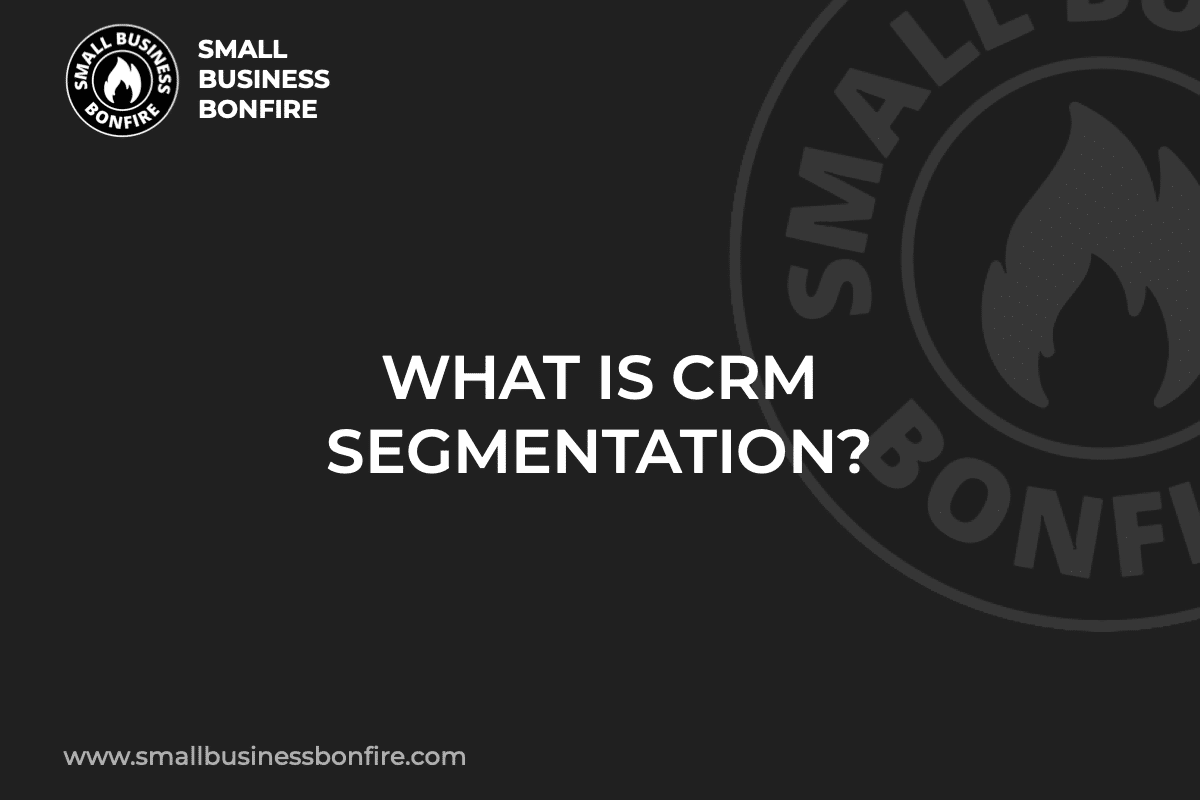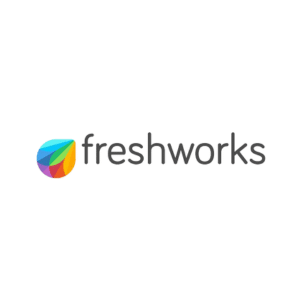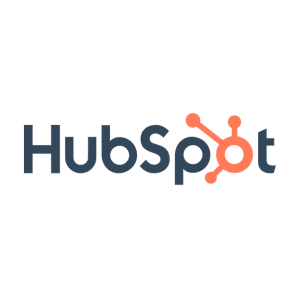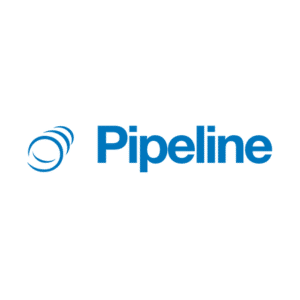Have your recent marketing initiatives missed the mark despite an excellent message?
You’re not alone! Several small businesses struggle with creating targeted campaigns because they haven’t segmented their customer base.
Hi, my name is AJ! I recently sold my business for multiple seven figures. These days, I aim to help entrepreneurs build successful companies through Small Business Bonfire (SBB).
Running a business for numerous years taught me the importance of effective customer segmentation!
So without further ado, let’s delve into the world of CRM Segmentation, an indispensable tool for refining your marketing strategies and boosting your small business profits!
Key Takeaways
- Customer segmentation involves grouping current and potential customers based on similar interests.
- Grouping customers allows teams to deliver more personalized messages.
- You can group customers based on age, average purchase amount, and interests.
Related Reading: Best Small Business CRM
SBB Featured Partners
What is CRM?
What is CRM? CRM stands for customer relationship management.
CRMs are software systems designed to help businesses do the following:
- Stay organized
- Communicate faster (with customers and inter-departmentally)
- Boost sales
- Streamline business operations
- Find new business opportunities
- Improve customer relationships
Here’s a simpler way to understand CRM software:
Imagine if you had a super helpful friend who always remembers everything.
This friend remembers all your other friends’ birthdays, their favorite candy, and even the last time you talked to them.
Not only that, but this friend could also tell you the best time to call your friends and what to talk about to make them happy.
CRM software is like that super helpful friend but for businesses.
Businesses have many customers, and it’s hard to remember everything about them.
A CRM system helps businesses remember and manage all this information.
What is CRM Segmentation?
CRM segmentation is when CRMs tag and group customers with shared characteristics.
For example, CRMs can segment customers based on the following details:
- Age
- Industry
- Gender
- Where they live
- The products they like
- Social media outlet
Customer segmentation allows companies to easily personalize sales, marketing, and customer service efforts based on a specific group.
As a result, businesses enjoy more customer loyalty and higher conversion rates.
How Does CRM Segmentation Work?
CRM segmentation analyzes customer data and categorizes it into meaningful groups or segments.
A customer segmentation strategy usually entails collecting customer data from various touchpoints, such as the following:
- Online purchases
- Email subscriptions
- Social media engagement
- Customer Inquiries
The CRM software then uses this information to create groups according to specified criteria.
The result is a set of well-defined customer groups with unique characteristics, needs, and preferences.
Businesses can then use these segments to design and execute better marketing efforts!
Customer Segmentation Models
Are you curious about the various ways you can segment your customers?
Below, I’ve compiled several ways your company can group different customers to improve each customer journey!
Demographic Segmentation
Demographic segmentation is a strategy that groups customers based on significant life circumstances.
For example, you can create customer segments based on the following demographic information:
- Age
- Gender
- Income
- Education
- Marital status
In some industries, segmenting customers based on demographic data makes little difference.
However, in other industries, such as e-commerce and fashion, this information helps businesses find the most valuable customers quickly!
Geographic Segmentation
Geographic segments divide current and potential customers based on the following criteria:
- Country
- State
- City
- Town
This type of customer segmentation helps if your company ships products to various locations.
Also, geographic segmentations help you tailor each marketing campaign, ensuring you speak like the people who live in each location (using slang, referencing specific markers, etc.).
Psychographic Segmentation
Segmenting customers based on psychographic data allows you to group customers based on the following details:
- Personality traits
- Attitude
- Values
- Interests
Psychographic segmenting ensures your marketing efforts are worthwhile because you target people who are actually interested in what you sell!
Technographic Segmentation
Technographic segments group customers based on the following:
- Mobile phone use
- Desktop use
- Apps
- Software
Understanding the type of technology people prefer is helpful when releasing marketing campaigns.
You want to ensure your ads reach the right people, and you can only do that if you send messages to the correct platforms.
Behavioral Segmentation
Segmenting customers based on behaviors ensures you don’t run ads that don’t match a prospect’s attitudes and beliefs.
Examples of behavioral segmentation include the following:
- Tendencies
- Frequent actions
- Feature, service, or product use
- Habits
Needs-based Segmentation
Needs-based segmentation includes product or service must-haves and the needs of specific customer groups.
This type of customer segmentation also allows you to tailor your products or services to meet customer must-haves!
Value-based Segmentation
Value-based segmentation includes the economic value of each customer segment within the business.
This customer segmentation strategy is ideal if your company sells products or services with high and low price points!
What are the Benefits of CRM Segmentation?
Does CRM segmentation make that much of a difference? Or will your company survive without it?
Here are six benefits of CRM segmentation!
Targeted Marketing Campaigns
Optimizing your marketing campaigns ensures you get the best return on your ad sending.
With CRM segmentation, you can identify each segment’s unique customer needs, preferences, and behaviors.
Also, when you segment customers, your business engages with the right people, leading to higher click-through rates, conversions, and sales!
Increased Campaign Conversions
CRM segmentation helps you convert campaigns faster because you target prospects more likely to buy what you sell.
Also, segmenting customers based on their behaviors and needs lets your business focus on the most valuable customer segments.
CRM segmentation helps your company spend more money on ad campaigns targeting customers with higher returns.
Lower Customer Acquisition Cost
Acquiring new customers can be expensive.
However, with CRM segmentation, your company spends money on the right people.
You don’t waste money sending ads to non-targeted prospects who don’t care about what you’re selling!
As a result, it costs less to acquire new customers (which saves your company a ton of money)!
Better Marketing Campaign Tracking
CRM segmentation allows you to track the performance of each marketing campaign.
You can measure how successful campaigns are based on details like:
- Customer segment engagement
- Click through rates
- Conversions
- Website Activity
Also, this type of data helps your business adjust ad spending strategies and optimize current campaigns!
Edge Out Your Competition
CRM segments allow you and your team to build a customized customer experience.
Therefore, your business has a competitive edge over companies that use a one-size-fits-all approach to their marketing strategy.
Personalized campaigns are (almost) always more effective because consumers desire a tailored shopping experience.
Improved Email Nurturing
Understanding customer behavior allows you to segment your email list.
As a result, your marketing team sends relevant nurture emails that resonate with each customer group.
So, rather than clutter your current and potential customers’ inboxes, you send effective messages that draw them into your brand.
How to Use CRM Segmentation Strategy
When you understand how to make customer segmentation work for your business, your business can:
- Organize its customer base
- Find and select top sales prospects
- Manage targeted communication methods easily
Let’s look at the steps for using CRM segmentation!
Step 1: Set Segmentation Goals
First things first, it’s essential you and your team set segmentation goals.
What are you hoping to gain from CRM segmentation? What areas of your business demand improvements?
Create conversion goals for each buyer persona your team currently has.
Also, utilize the various ways to segment your customers to create realistic and applicable goals for every group!
Step 2: Gather Customer Data
Next, you need to gather customer data.
Make sure you have access to customer information like:
- Demographics
- Geolocation
- Psychographic traits
- Interests/Hobbies
Once you have this information, you can segment customers into unique groups.
You can collect data from outlets like your website, social media, and, most importantly, CRM software.
Step 3: Create Customer Categories
After gathering data, the third step in your customer segmentation strategy should be creating customer categories.
Analyze your data and search for patterns and similar customer activities.
Also, it’s okay if one customer belongs to two or more segments (this is quite common).
For example, if you segment customers based on demographics and behavior, one person falls into two categories.
Step 4: Use CRM to Segment Groups
Now, it’s time to segment customers into groups using CRM software.
CRM systems are advanced and can create more accurate and applicable groups than people can.
Utilizing CRM to create customer segmentation standards is helpful if your company has an extensive database!
Step 5: Use Marketing Campaigns to Target Each Group
The next step in using CRM segmentation strategy is targeting each group with separate marketing campaigns.
Make sure you tailor your ads to appeal and resonate with each customer persona.
Marketing campaigns are only helpful if you send them to the right group of people!
Step 6: Monitor, Modify and Adjust Segments
Lastly, it’s essential to monitor and adjust segments as necessary.
Your customers won’t stay the same forever, so keeping up with their changing needs and demands is critical.
Customer Segmentation Examples
Now, let’s look at a few customer segmentation examples.
After reviewing this list, you should have a pretty good idea of how your company will segment customers!
Gender
You can create a segment based on gender.
It’s crucial to note that specific segments look highly upon companies that target beyond the outdated “male or female” gender structure.
Ensuring people who are non-binary, pangender, or gender fluid feel welcome by your company can help you stand out.
Age
Age is another way to offer a personalized experience.
Some messages will resonate with people in their 50s differently than those in their 20s.
Consider your products and services and who they’re tailored to.
Occupation
Identifying customer occupations can help you understand what type of shopping habits they have.
For instance, a lawyer may be willing to spend more on certain items than someone who is a stay-at-home mom.
Marital Status
Marital status is another way to segment customers.
Couples tend to have different wants and needs than single people.
For example, couples may be in the market for larger items like furniture or appliances, whereas single people may need a few things from the store.
Household Income
Customer segmentation based on household income is helpful when choosing price points.
For example, if your company sells high-end watches, the last group of people you want to target are those living paycheck to paycheck.
Location
Geographic segmentation also matters for certain products and services.
For example, if you are a company specializing in winter gear, there may be better options than targeting customers in tropical climates.
Preferred Language
Considering preferred language when discussing customer segmentation may seem silly, but I’ve seen businesses run ads incorrectly!
How effective can a marketing campaign be if your target audience doesn’t understand it?
Ensure you understand what languages your segments speak and understand.
Transportation
Transportation preferences can also affect customer segmentation.
So, if your company offers car services, targeting people who don’t have a license won’t be helpful!
Workspace
Where someone works can also determine the type of customer segmentation you create.
For example, a business specializing in office supplies should focus on professionals, not college students.
Life Cycle Stage
Consider what cycle of life each potential customer is at when creating segments.
People with kids may have less money to spend on luxury or non-essential items than single people.
Website Activity
You can use website activity to determine what type of customer segmentation applies.
Analyze the pages people visit on your site, as well as how long they stay and where they go after.
Last Customer Engagement
What was the last interaction you had with a customer? Was it a sale? Or was it an abandoned cart?
Group potential and current customers based on how you last engaged with them to ensure the best next step!
E-commerce Activity
If you have an e-commerce business, consider what customers are looking for.
Are they more likely to purchase a single item or several?
Knowing this information can help you create segments based on shopping habits.
Values
Consider what each segment values and finds most important.
Understanding values helps create effective marketing tactics.
Interests
This one is obvious.
Target and group people who share similar interests, whether broad or niche!
Personality
Personality segmentation is a great way to reach the right people.
Try using personality tests and surveys to understand what each segment likes or dislikes.
Device Type
Group people with similar devices so they can read and view your marketing campaigns clearly.
Apple and Android devices often display images differently.
Browser Type
It’s also important to consider what browser your customer segments are using.
Certain customers may be unable to view your ads if they use an older browser!
Original Source
You can segment customers based on where they heard about your company.
Was it through a referral? Or from an advertisement?
Customer Satisfaction Scores
Segmenting customers based on customer satisfaction scores ensures you put more emphasis on people who rated your products or services lower.
As a result, you can win these customers over.
Number of Purchases
You can also segment customers based on how often they purchase from your company.
For instance, you can offer loyal customers special discounts or rewards!
Average Purchase Value
Segmenting based on average purchase value ensures you target higher-priced items to the people willing to spend more.
Product Attributes
Product attributes ensure you target customer must-haves and meet their demands.
Service Needs
If your company provides services, you should segment customers based on their needs.
For instance, a customer looking for a one-time service will require different messaging than someone who needs regular maintenance!
Delivery Method
Lastly, use CRM segmentation to group customers into preferred delivery methods.
Do they like in-person shopping or next-day delivery?
Customer Segmentation Tips
Many people think CRM segmentation is complex.
But with these tips, you’ll be just fine!
Tip 1: Create SMART Goals
When you create CRM segmentation goals, ensure they are:
- Specific
- Measurable
- Achievable
- Relevant
- Time-bound
SMART goals lead to higher chances of success!
Tip 2: Involve Stakeholders
Ensure your company’s stakeholders know what’s going on!
Also, consult them for certain decisions and advice while creating customer segments.
Tip 3: Use Machine Learning
Utilize machine learning when creating customer segments.
AI makes the process quicker and more accurate!
While you can undoubtedly create customer groupings manually, it takes your attention away from valuable tasks.
Tip 4: Create Stable Segments
While creating segments, ensure you and your team can use them long-term.
Stable segments ensure documents don’t get lost over time.
Tip 5: Create a Plan for Each Segment
When you create segments, ensure that each one has a plan.
That way, you’ll know exactly what to do with each segment and how to target them best!
Tip 6: Make Segments Easy to Use
Segments might be challenging to compile and organize, but they must be easy for your team members to use.
Easy-to-use customer groups ensure people can find what they’re looking for quickly!
Tip 7: Make Segments the Right Size
When creating customer segments, ensure the group is large enough to be useful but also small enough to target accurately.
A good number of customers in each group ranges between 50-200!
Tip 8: Make Segements Profitable
Many people forget to ensure their segments are profitable.
Analyze the data and ensure a return on investment for creating customer groupings!
Tip 9: Find Loyal Customers
Target loyal customers who will continually purchase your products or services and promote them!
Nothing is better than a loyal customer because they’re free advertising.
Tip 10: Make Customer Communication User-Centric
Finally, make sure your customer communication is user-centric.
Address each segment in a way that meets their needs and interests!
Customer Segmentation Analysis
Let’s review the importance of CRM segmentation analysis!
Benefits of Customer Segmentation Analysis
Customer segmentation analysis brings numerous benefits to businesses.
For example, here are some benefits of segmentation analysis:
- Your team is aware of any changes
- Easier to innovate while remaining customer-centric
- Improves brand awareness
- Allows you to stay ahead of competitors
How to Do Customer Segmentation Analysis
Here are five steps to ensure your team’s customer groups are practical for your business.
Step 1: Review Customer Segments for Accuracy
First, ensure your data for each segment is accurate.
Bad data can negatively impact marketing efforts, reports, and CRM suggestions.
Step 2: Compare Customer Segments Performance
Review your key performance indicators for each customer group.
Then, analyze how each group is doing compared to overall business performance.
Step 3: Get Team Feedback
Rely on your team for feedback and suggestions.
Team feedback generates a creative environment and ensures everything is accounted for!
Step 4: Get Customer Feedback
Gather customer feedback as well.
Ask about their shopping experience and whether any aspect could use improvements.
Step 5: Make Changes Regularly
Lastly, ensure you review your segments and your team’s approaches regularly.
Continuously changing and altering your marketing approaches helps you stay fresh in peoples’ minds and updated with the latest trends.
Tested Customer Segmentation Software
Here are two examples of customer segmentation software I’ve used and highly recommend!
Freshworks
Freshworks’ easy-to-use platform relies on artificial intelligence to create tailored customer groups.
From there, Freshworks’ software provides suggestions and the best courses of action!
What’s excellent about Freshworks is the 21-day free trial and free demo for those of us who are hesitant to invest in expensive software before testing it out!
Are you interested in learning more about Freshworks? Check out our full Freshworks review!
HubSpot
HubSpot allows users to segment consumers with static and active contact lists.
On top of that, you can implement contact scoring, allowing you to rank customers based on specified criteria.
HubSpot automatically includes its customer segmentation software in all its plans, including the free CRM, CMS, Marketing Hub, Sales Hub, and Service Hub!
Learn more about HubSpot in our full HubSpot CRM review!
Customer Segmentation Conclusion
CRM segmentation is critical if you want to remain competitive in your industry!
Segmenting consumers allows you to deliver personalized buying experiences, boost customer loyalty, and enjoy more sales!
What customer segmentation software will your team use? Let us know in the comments section!
Newsletter Signup
Join The Leads Field Guide Newsletter for tips, strategies and (free) resources for growing your leads, and closing more deals.




